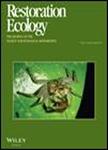版权所有:内蒙古大学图书馆 技术提供:维普资讯• 智图
内蒙古自治区呼和浩特市赛罕区大学西街235号 邮编: 010021

作者机构:US Geol Survey Forest & Rangeland Ecosyst Sci Ctr 970 S Lusk St Boise ID 83706 USA
出 版 物:《RESTORATION ECOLOGY》 (恢复生态学)
年 卷 期:2019年第27卷第5期
页 面:1053-1063页
核心收录:
学科分类:0710[理学-生物学] 07[理学] 09[农学] 0713[理学-生态学]
基 金:U.S. Government USGS/BLM U.S. Geological Survey, USGS Great Northern Landscape Conservation Cooperative, GNLCC
主 题:ecological prediction ensemble modeling machine learning model comparison postfire restoration predictive framework
摘 要:Improving predictions of restoration outcomes is increasingly important to resource managers for accountability and adaptive management, yet there is limited guidance for selecting a predictive model from the multitude available. The goal of this article was to identify an optimal predictive framework for restoration ecology using 11 modeling frameworks (including machine learning, inferential, and ensemble approaches) and three data groups (field data, geographic data [GIS], and a combination thereof). We test this approach with a dataset from a large postfire sagebrush reestablishment project in the Great Basin, U.S.A. Predictive power varied among models and data groups, ranging from 58% to 79% accuracy. Finer-scale field data generally had the greatest predictive power, although GIS data were present in the best models overall. An ensemble prediction computed from the 10 models parameterized to field data was well above average for accuracy but was outperformed by others that prioritized model parsimony by selecting predictor variables based on rankings of their importance among all candidate models. The variation in predictive power among a suite of modeling frameworks underscores the importance of a model comparison and refinement approach that evaluates multiple models and data groups, and selects variables based on their contribution to predictive power. The enhanced understanding of factors influencing restoration outcomes accomplished by this framework has the potential to aid the adaptive management process for improving future restoration outcomes.